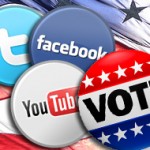 Lessig talked about the copyrights law in the age of digital technologies. Despite the law’s intended purpose of protecting the economic sustainability of the creators, the law has been recently applied too broadly, failing to distinguish professional works and amateur byproducts. Consequently, the law discourages amateurs to participate actively in content creations, although copyright law should protect both amateurs and professionals.
Lessig talked about the copyrights law in the age of digital technologies. Despite the law’s intended purpose of protecting the economic sustainability of the creators, the law has been recently applied too broadly, failing to distinguish professional works and amateur byproducts. Consequently, the law discourages amateurs to participate actively in content creations, although copyright law should protect both amateurs and professionals.
As we already passed the era of passive media consumption and entered active participation with co-creation era, the conflict between copyright and digital technology is worsening. Lessig pointed out that the copyright law is completely out of sync with the technology and heavily outdate. It cannot accommodate modern digital environment for creative content productions. Hence, the author suggested that we should adjust the mind set into hybrid economy, which is based on the culture of participation.
Dramatic Stalking Cat (attracting 1.8 million viewers)
Lohmann’s article shared a similar view. The copyright laws are becoming more of obstacles to prevent creative productions because it imposes myriad regulations and the presence of lawyers and insurance adjuster. Unlike the era before digital technologies and commercially available media software, anyone can demonstrate their creativity and talents with available tools. Nevertheless, the current copyright laws cannot accommodate such creations, except in online. The “culture of participation” will not only dominate the future of content creations, but also facilitate the explosions of creativities because it even allows one with talent, but with a shallow pocket to hang around at the playground. The game is changed.
Marshall elaborated his perspectives on media in the context of the movie industry. Although he did not use the term, “interactivity” from the viewpoint of users’ ability to engage with contents via various communication technologies, I have doubt about the movie industry’s strategy of saturating every media channels with promotions backed by massive promotional budget. It is still based on passive consumption of audience. The industry wants to force-feed audience with the contents, rather than engage with the audience to build interest and fandoms. Besides, viral-marketing based promotions often do not cost enormous amounts of resources because fans do the promotion for their favorable contents. Just like, ‘Blair Witch Project’ was a tremendous financial success, the movie industry seriously need to consider interactive promotion strategies.
As Aufderheife pointed out, social media facilitates user content sharing easier than before. Just as we have shared experiences and contents with close friends in the day of offline, we are now doing nearly identical activities of sharing experiences and contents in online by enforcing the existing relationships with the people whom we maintain relationships. Nevertheless, such an explosion of creative contents and easy sharing certainly intimated media industry, and of course, legal retaliations against social media channels, such as YouTube, are well anticipated because the entire industry is frantically clinging onto the system, which cannot accommodate the explosion of user-generated contents. Nevertheless, passive media consumption is no longer a solution. I want to watch old commercial and funny animal videos when I want and have free time, rather than seating in front of TV. I got a hunch that I am not alone in this.







